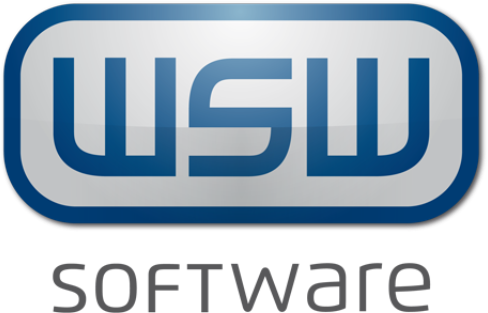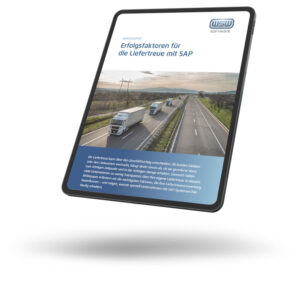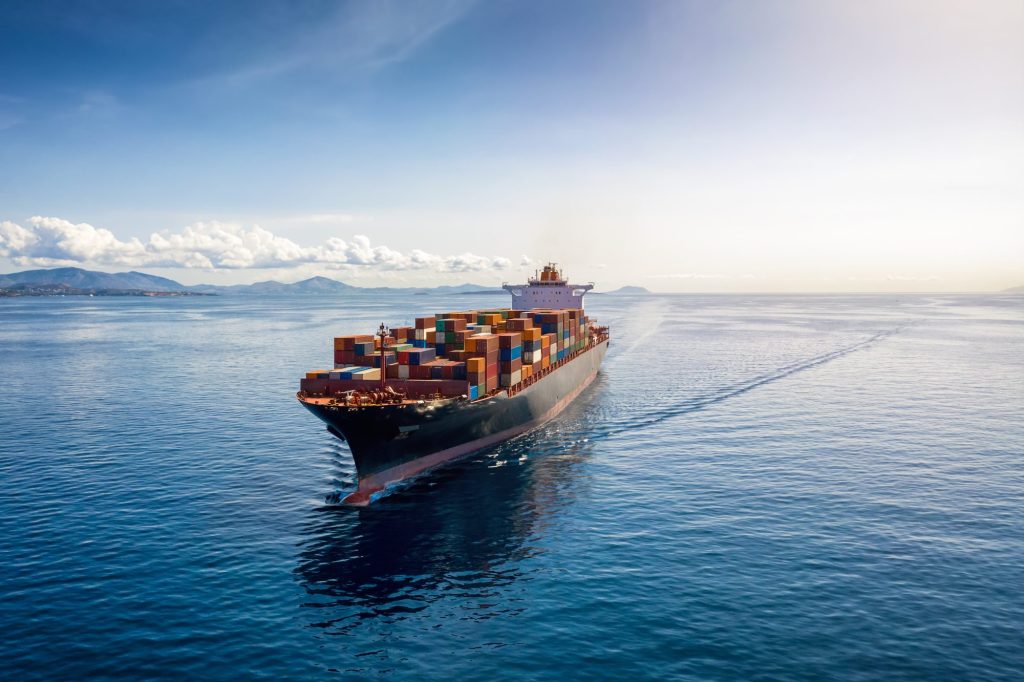Preferential pricing allows companies to benefit financially from tariff preferences. But the implementation is not easy.
This article explains how it still succeeds and what to pay special attention to.
In connection with the export and import of products, the origin of a good is referenced again and again. But what is the decisive factor here? A distinction must be made here. While, for example, a designation of origin in the sense of "Made in..." or the commercial origin of a product can still be determined comparatively easily, the determination of the preferential origin of goods is carried out according to very clear and significantly more complex rules.
Particularly for the manufacturing industry, a determination of origin in the context of a Preference determination of their own products is necessary. Globalization with supply and production chains spanning the world, frequent changes in procurement, and price fluctuations are just some of the challenges that manufacturers regularly face. However, managing these issues sustainably and efficiently is a mandatory prerequisite for benefiting permanently from customs reductions within the scope of international Preferential agreement to profit.
As a producer, these regulations can at first glance make you feel overwhelmed. Basically, for each commodity there is a so-called Third country duty rate (also standard customs duty), which applies to all goods imported into the customs union. However, for goods from certain countries and territories, customs offer so-called Preferential measures . As a result, these goods receive preferential treatment, which is guaranteed by so-called Preferential tariff rates are integrated in the customs tariff.
In order to determine whether a product can benefit from tariff preferences, it requires a more detailed analysis of the so-called origin characteristics of the goods. This is done as part of a preference calculation. If this is carried out automatically with an ERP system such as SAP, this can ensure significant cost reductions (customs savings). In addition, processes can be streamlined and automated, and transparency and traceability can be increased through IT-supported processing. The use of existing information from the ERP system without media disruption is another advantage.
What is a preference determination?
The meaning of preference determination becomes somewhat clearer when we look at its alternative designation, the determination of origin. It calculates the originating status of a product and enables it to be exported at preferential tariff rates. Preference determination is a part of preference processing, which proceeds as follows:
- Obtain vendor declaration,
- Perform preference determination,
- Preferential proofs such as the Vendor Declaration spend.
The aim of the preference determination is possible duty reductions or the complete elimination of duties. Whether preferential duty rates apply to the import of a product in the country of destination of the shipping process depends first of all on whether a preferential agreement exists between the countries concerned. If this is the case, it must be checked whether the preferential origin of the goods can be determined. If this is also the case, there will be an individual cost reduction. This depends on the originating status, which is determined during the preference determination, and the corresponding conditions of the respective agreement.
Advantages of preference determination
Preferential pricing can make producers more attractive, as lower import duties are due for customers in a target country with a preferential agreement. From the customer's point of view, this reduces the so-called Total-landed-costs, which include the costs of the entire supply chain, from the point of manufacture to the point of consumption. These include, for example
- Storage costs
- Processing
- Packing
- Transport (also of empties)
- Customs fees
- Administration
Customers can thus use the total landed costs for a cost-optimized supplier selection and the most favorable transport routes possible. If the preference determination results in tariff savings, the producer becomes more attractive to the customer as a future vendor. This creates a competitive advantage from the vendor's point of view.
Preference determination rules
In the protocols to the preferential agreements, there are specific list rules that define the conditions for obtaining a tariff preference.
For a valid determination based on the respective list rules, various information is required, including, for example, information about:
- the customs tariff numbers of the products and intermediate products
- the relevant sales price
- Purchase prices of the processed materials or intermediate products
- Preferential originating status of the input products
The origin property
Whether a product is recognized as having preferential origin and thus receives a tariff preference depends on whether it complies with the list rules of the relevant free trade agreement. In order to be able to benefit from the advantages of the corresponding free trade agreement, more than just a so-called minimum treatment of already existing materials/goods is required in principle.
Minimal treatments, according to the German customs, could be, for example, the following:
- easy filling into bottles
- Textile ironing
- easy painting or polishing
- easy mixing of products
Can more than one minimal treatment be demonstrated,
the preference determination based on the list rules comes into play.
The list rules
The list rules vary depending on the preferential agreement. They designate a specified level of processing that must be fulfilled for products to acquire these originating characteristics. As a result, they qualify the product for tariff preferences.
The list rules are usually composed of main and alternative rules. The fulfillment of one rule is sufficient.
Why do companies benefit from a determination based on the worst case principle?
Particularly in the case of long-term vendor relationships, the aim is to be able to submit a long-term vendor declaration that is as permanently valid as possible. To ensure this, fluctuations in purchase and sales prices over a certain period of time must be taken into account in the determination. The worst case principle is used for this purpose.
The following values are of interest for this determination:
- Lowest purchase price for input materials with preferential property
- Highest purchase price for input materials without preferential property
- Lowest calculated ex-works price of the final product
| Delivery | Purchase price for input materials without preferential characteristic | Ex-works price of the finished product |
|---|---|---|
| 1 | 750 € | 3.000 € |
| 2 | 1.140 € | 3.300 € |
| 3 | 1.197 € | 3.900 € |
In the worst-case calculation, the purchase price for input materials without preferential treatment would therefore be €1,197 and an ex-works price of €3,000.
With a calculation according to the worst case principle, a subsequent withdrawal of tariff preferences can be avoided, which can be very costly.
What are the advantages of system-supported processing of preference determination with SAP?
Automated preference determination with ERP systems such as SAP ensures resource- and time-saving determination of possible qualifications of in-house manufactured products for customs preferences. Automated preference determination efficiently simplifies and facilitates work processes based on existing data records and thus promotes corporate success.
Especially if SAP systems are already in use, it makes sense to process preference determination directly in SAP. In this way, interfaces can be reduced, the complexity of the system landscape can be kept low, and existing information in SAP ERP can be used. This creates flexibility for the future.
There are several approaches to this:
Preference determination using stand-alone solutions
Various third-party solutions offer the possibility to perform preference determinations. Ideally, these can be supplied with data from the connected SAP system via an interface.
Disadvantages here are:
- Interface vulnerability
- Lack of flexibility
- Increased effort when importing data back from the external solution to SAP
- Discrepancies in the presentation of information (different graphical user interfaces)
- Increased complexity of the IT infrastructure
- Additional effort for data backup and archiving
Preference determination in SAP ERP or S/4HANA
Unfortunately, the scope of functions with regard to preference determination in the standard SAP ERP or SAP S/4HANA is insufficient for most companies and requires expansion through add-ons. These are fully integrated into the existing SAP system, are release-safe, and use a common database and infrastructure. Interfaces, separate servers, or databases are not required and ultimately make the system more stable, cost-effective, and easier to maintain.
The integrated handling of preference determination in the existing SAP system through the use of add-ons is the most efficient and economically sensible option for a majority of companies.
SAP GTS Preference Determination
The implementation of the large SAP Global Trade Services platform is particularly worthwhile for companies with large export volumes, most of which operate in other EU countries. SAP GTS basically offers all the advantages of an ERP-integrated solution, but incurs high costs for acquisition and operation. The amount of support required by the user also increases compared to preference determination that is handled entirely in SAP.
The consequences of incorrect preference statements - Why correct preference determination is important
With the help of preference processing, you and your customers can benefit from preferential agreements. This is the central reason why companies try to achieve the best possible results in preference determination. At the same time, preference statements must be correct.
The company itself is responsible for the issued proof and its correctness. An incorrectly issued certificate can have consequences under civil law, criminal law and tax law, in addition to an angry customer, and can have a negative impact on existing authorizations.
These consequences have false preference statements:
Civil law consequences
Under civil law, the origin of the goods may constitute a warranted characteristic as the subject matter of the contract. If this property is not fulfilled, this represents a material defect according to §434 of the German Civil Code (BGB). The rights of the buyer result from §437 BGB. The resulting damage for the customer can be claimed. This damage is the higher duty rate to be paid and, if applicable, an additional penalty payment imposed.
Especially the civil law consequences of a false preference statement also have long-term consequences: Your relationship with your customers suffers. While your customer not only has to invest time and money to claim damages against you, your credibility as a reliable vendor also suffers.
Criminal consequences
A vendor declaration is not a document, therefore a wrongly issued vendor declaration is not considered a false certification. Penalties may, however, arise from §130 of the Administrative Offence Act (OWiG) if the owner of the business is penalized on the basis of a breach of the duty of supervision.
Tax consequences
There may be tax evasion according to §370 of the German Fiscal Code (AO), reckless tax evasion according to §378 AO or tax endangerment according to §379 AO. The differences arise from whether the company itself or the customer executes the customs declaration in the third country and the company's involvement in the false statement. Tax evasion can be punished with a fine or imprisonment.
Consequences for the special rights of the company: approved exporter
In order to obtain the status of "approved exporter", a company is obliged to provide the responsible customs office with a guarantee of the proper handling of preferential goods traffic. The company's internal organization must therefore ensure that the originating status can be verified and monitored without any doubt.
Within the framework of the creation of a work and organizational instruction, a so-called overall responsible person must be named and appointed. The person with overall responsibility must be able to ensure the safe implementation of the work and organizational instructions in the company.
FAQ
We explain the most important terms in the context of preference calculation here:
Preference determination is a subarea of preference processing. It determines the originating status of a product and enables it to be exported at preferential tariff rates.
Total landed costs are the total costs of a supply chain, from the point of manufacture to the point of consumption. They include, among other things, costs for storage, handling, packaging, transport (including empties), customs duties and administration.



